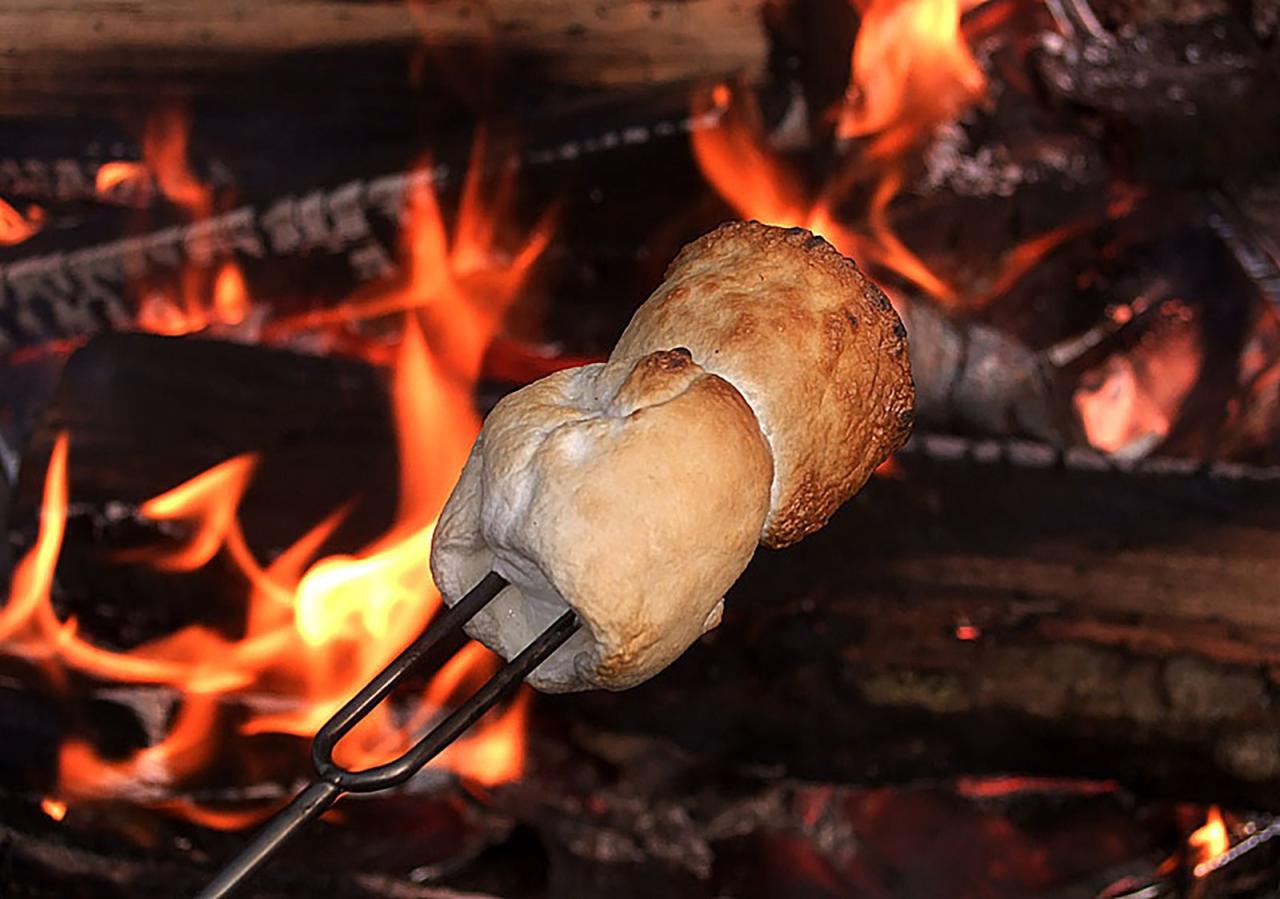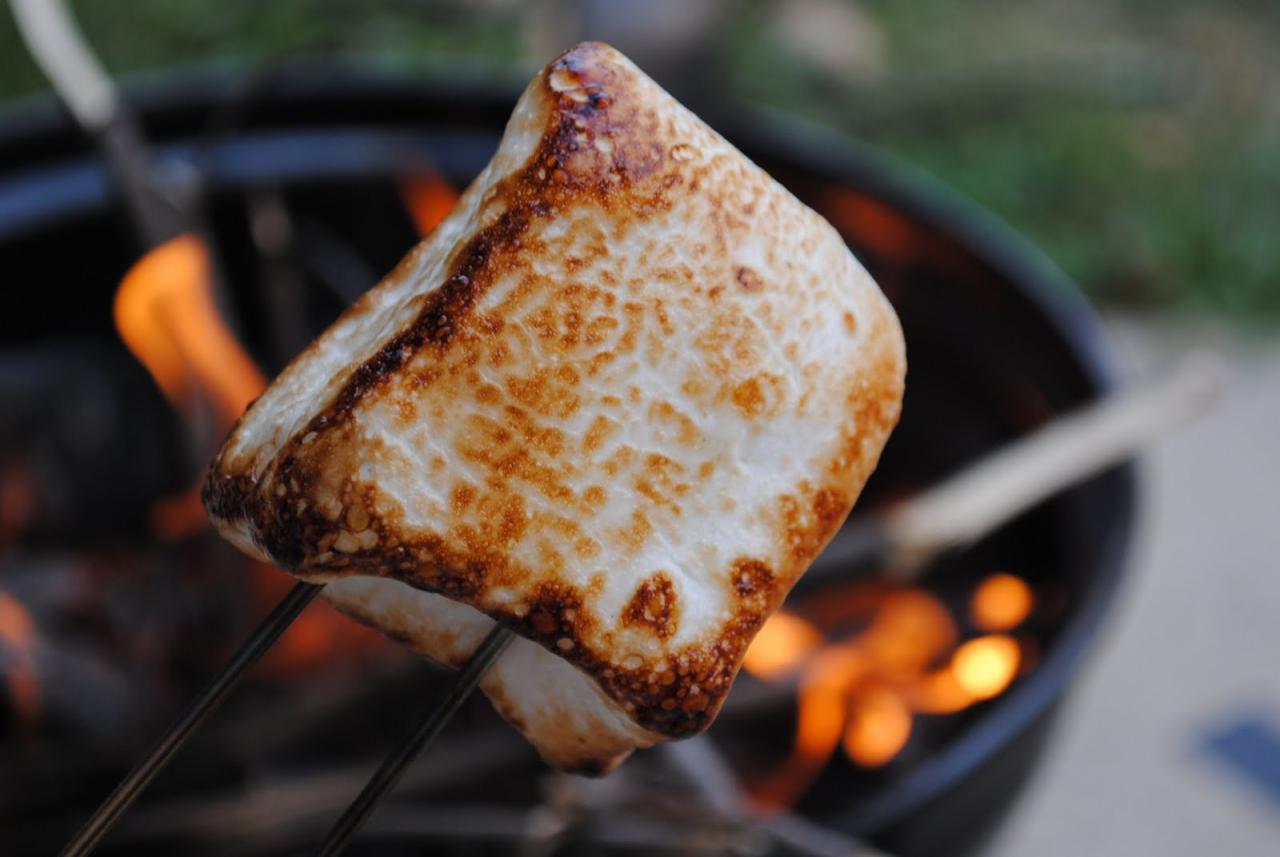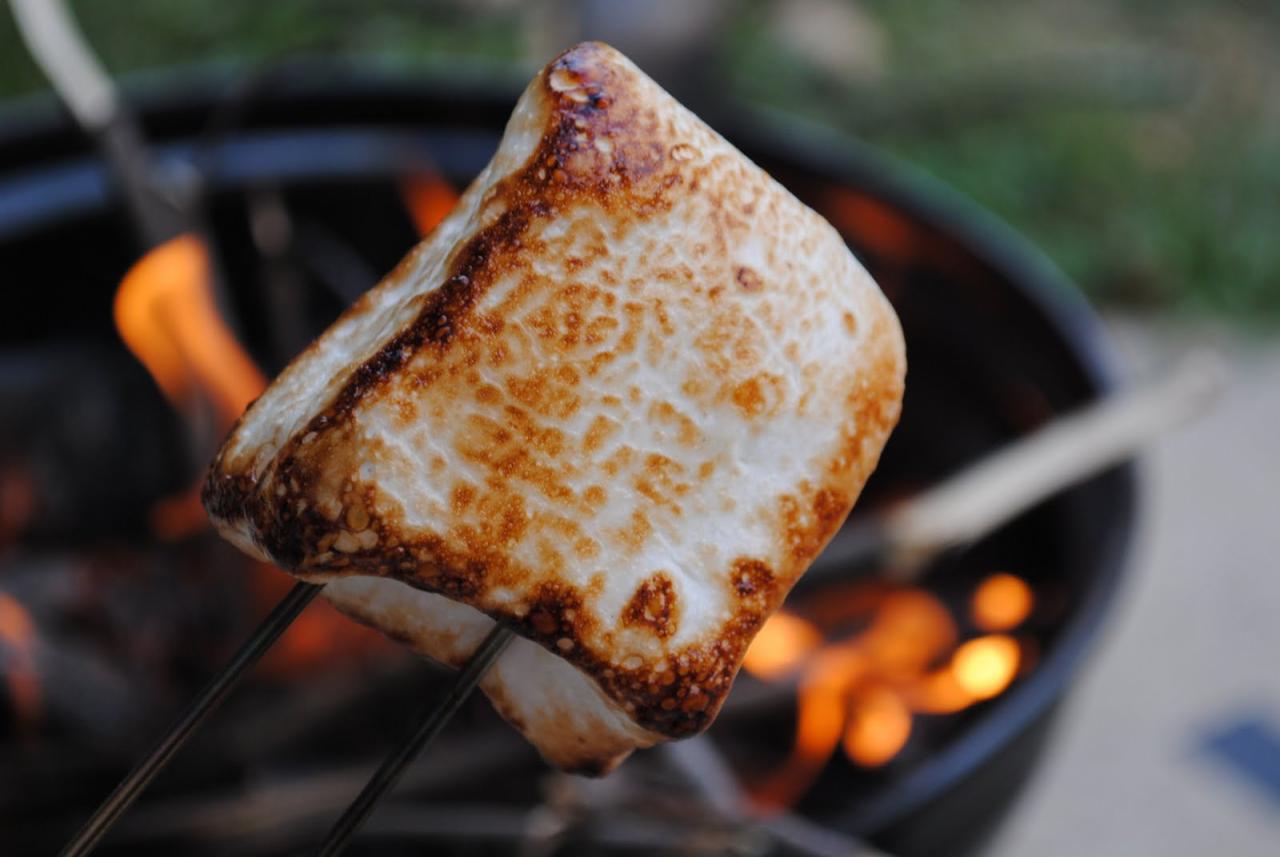As the texture of a roasted marshmallow takes center stage, this opening passage beckons readers into a world crafted with good knowledge, ensuring a reading experience that is both absorbing and distinctly original. The unique texture of roasted marshmallows, a combination of crispiness, softness, and stickiness, is a culinary and artistic delight that has captured the imagination of chefs, artists, and food enthusiasts alike.
The chemical and physical changes that occur during roasting lead to the marshmallow’s distinctive texture. The heat causes the marshmallow’s surface to caramelize, creating a crispy exterior, while the interior remains soft and gooey. The roasting process can be varied to achieve different textures, with higher heat and longer durations resulting in a crispier marshmallow.
Texture of Roasted Marshmallows: Texture Of A Roasted Marshmallow
Roasted marshmallows possess a distinctive texture that sets them apart from their unroasted counterparts. They exhibit a crispy outer layer, a soft and fluffy interior, and a sticky surface that contributes to their unique sensory experience.
Chemical and Physical Changes During Roasting, Texture of a roasted marshmallow
The roasting process induces a series of chemical and physical transformations that give rise to the marshmallow’s characteristic texture. As the marshmallow is exposed to heat, the sugars present within its composition undergo caramelization, resulting in the formation of a crisp outer shell.
Simultaneously, the water content evaporates, leading to the marshmallow’s expansion and the creation of air pockets that contribute to its soft and fluffy interior.
Influence of Roasting Conditions
The texture of roasted marshmallows can be further influenced by varying the heat levels and durations of the roasting process. Higher temperatures and longer roasting times result in a more pronounced caramelization and a crispier outer layer. Conversely, lower temperatures and shorter roasting times yield a softer and less caramelized marshmallow.
Culinary Applications and Effects of Texture

Roasted marshmallows offer a unique and versatile texture that can elevate various culinary creations. Their soft, chewy interior and crispy exterior add a delightful contrast to dishes, enhancing both taste and experience.
The texture of roasted marshmallows complements sweet and savory dishes alike. In desserts, they add a fluffy, airy element that balances richer ingredients like chocolate or caramel. In beverages, they provide a delightful textural contrast to smooth liquids, creating a satisfying mouthfeel.
Even in savory dishes, roasted marshmallows can add a touch of sweetness and texture to balance spicy or salty flavors.
Roasted Marshmallows in Desserts
- In s’mores, the chewy marshmallow pairs perfectly with crispy graham crackers and rich chocolate, creating a classic campfire treat.
- In ice cream sundaes, roasted marshmallows add a sweet, fluffy topping that melts into the ice cream, creating a delicious textural contrast.
- In pies and tarts, roasted marshmallows can be used as a filling or topping, adding a gooey, marshmallowy texture that complements the flaky crust.
Roasted Marshmallows in Beverages
- In hot chocolate, roasted marshmallows create a delightful textural contrast to the warm, velvety liquid, melting into a sweet, marshmallowy topping.
- In coffee drinks, roasted marshmallows add a touch of sweetness and texture, balancing the bitterness of the coffee.
- In milkshakes, roasted marshmallows add a fluffy, marshmallowy element that complements the smooth, creamy texture of the milkshake.
Roasted Marshmallows in Savory Dishes
- In roasted vegetable salads, roasted marshmallows add a touch of sweetness and texture to balance the earthy flavors of the vegetables.
- In grilled cheese sandwiches, roasted marshmallows can be added to the interior, creating a gooey, marshmallowy filling that complements the melted cheese.
- In savory tarts, roasted marshmallows can be used as a topping, adding a sweet, crispy element to balance the savory flavors of the tart.
Texture Comparisons and Artistic Inspirations

The texture of roasted marshmallows is unique and has inspired comparisons to various other culinary items. Its soft, chewy interior and crispy, caramelized exterior create a delightful contrast that sets it apart from other confections.
One notable comparison is to bread. Both roasted marshmallows and bread have a soft and yielding texture, but the marshmallow’s fluffiness and lack of gluten give it a distinct lightness. Another comparison is to cotton candy, which shares the marshmallow’s airy texture but is more delicate and dissolves more easily in the mouth.
Meringue, a whipped egg white mixture, also comes close to the texture of roasted marshmallows. However, meringue tends to be stiffer and less chewy, with a more pronounced sweetness.
Artistic Inspirations
The unique texture of roasted marshmallows has also inspired artistic creations. Sculptors have used the marshmallow’s malleability to create intricate works of art, capturing its soft and pillowy qualities. Painters have depicted the marshmallow’s toasted exterior and gooey interior, capturing its visual appeal.
Even musical composers have found inspiration in the marshmallow’s texture, creating pieces that evoke its soft and chewy nature.
Texture Comparison Table
The following table compares the textures of different roasted marshmallow types:
| Type | Texture |
|---|---|
| Store-bought | Uniformly soft and chewy, with a slightly crispy exterior |
| Homemade | More variable in texture, with a chewier interior and a crispier exterior |
| Campfire-roasted | Chewy interior with a charred and crispy exterior |
Concluding Remarks
The texture of roasted marshmallows has inspired artistic creations, such as sculptures, paintings, and musical compositions. Its unique combination of crispy and soft textures has made it a popular ingredient in desserts, beverages, and savory dishes. Whether enjoyed as a simple campfire treat or as an element in a sophisticated culinary creation, the texture of a roasted marshmallow is a testament to the transformative power of heat and the endless possibilities of culinary exploration.
Essential Questionnaire
What causes the crispy exterior of a roasted marshmallow?
The crispy exterior is caused by the caramelization of the marshmallow’s surface when exposed to heat.
Why does the interior of a roasted marshmallow remain soft and gooey?
The interior remains soft and gooey because the heat does not penetrate the marshmallow’s core as quickly as the surface.
How can the texture of a roasted marshmallow be varied?
The texture can be varied by adjusting the heat level and roasting duration. Higher heat and longer durations result in a crispier marshmallow.

